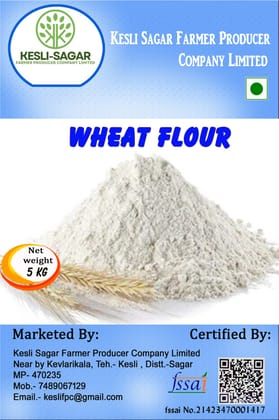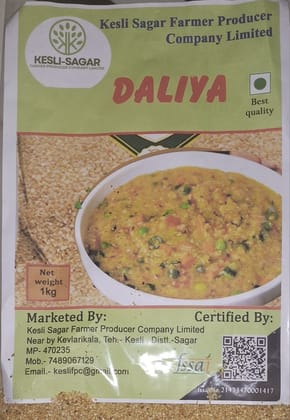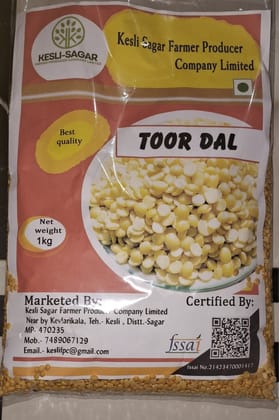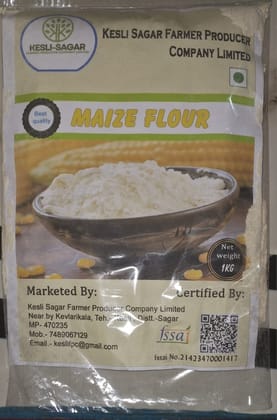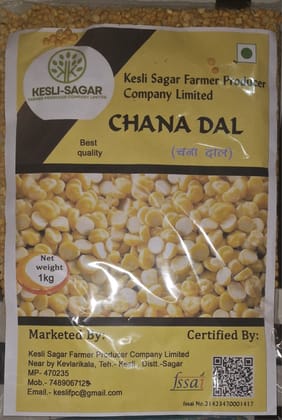Wheat flour, a staple ingredient in kitchens worldwide, is a powder made by grinding wheat kernels. Its characteristics and uses vary depending on the type of wheat, milling process,
Read MoreWheat Flour
Key Attributes
| Country of origin | India |
|---|---|
| Net Quantity | 1 kilogram |
| Manufacturer or packer name | Kesli- Sagar Farmer Producer Company Limited |
Wheat flour, a staple ingredient in kitchens worldwide, is a powder made by grinding wheat kernels. Its characteristics and uses vary depending on the type of wheat, milling process, and extraction rate. Here's a breakdown:
Types and Uses:
All-purpose flour: Most widely used, suitable for various baked goods like bread, cookies, and cakes. Contains a moderate amount of protein (8-10%) for gluten development and structure.
Bread flour: High in protein (11-13%), ideal for yeast breads due to its ability to form strong gluten for rise and chewiness.
Cake flour: Low in protein (7-8%), resulting in delicate, tender cakes and pastries with minimal gluten development.
Pastry flour: Moderate protein (8-10%) good for flaky pie crusts and cookies, offering some structure while remaining tender.
Whole wheat flour: Made from the entire wheat kernel, including bran and germ, resulting in a coarser texture, nuttier flavor, and higher fiber content. Good for breads, muffins, and pancakes.
Nutritional Value:
Primarily carbohydrates, providing energy.
Protein content varies by type, ranging from 7% to 13%.
Whole wheat flour offers more fiber, vitamins, and minerals than refined flours.
| Country of origin | India |
|---|---|
| Common name | Wheat flour |
| Net Quantity | 1 kilogram |
| Expiry Date | USE BEFORE 6 MONTH FROM PACKING DATE |
| Package Dimension | 100L x 50W x 100H cm |
| Manufacturer or packer name | Kesli- Sagar Farmer Producer Company Limited |
| Manufacturer or packer address | Near by Kevlarikala , Teh.- Kesli, Distt.- Sagar, Madhya Pradesh - 470235 |
| Manufacturing Date | 08/24 |
| contact details consumer care | Kesli Sagar Farmer Producer Company Limited, [email protected] |










